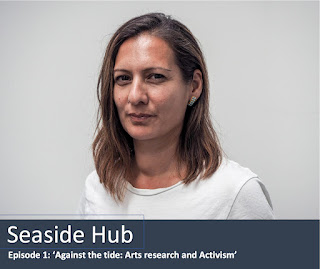"I feel so bored during the holidays, I want to check my e-mails, but I am not allowed to." (Anonymous friend)
- Since we have all been forced to slow down these days, the meaning of 'holidays' and 'leisure time' seems to have shifted.
To begin with shedding light on the critical relation between leisure time and labour time, let’s take a look back to pre-industrial era, when family life and work, i.e. by keeping a farm, was inseparable. Then, industrial regimes introduced a system of measurement in order to structure labour and leisure time and increase financial outcome which further developed into new forms of exploitation. [1] As a result, workers began to fight for more self-determined leisure time - Karl Marx as the voice of the working class regarded leisure as a space for the “full development of the individual”. [2]
Facing the development of an entertainment industry in the United States during the early twentieth century another anti-capitalist, Theodor Adorno, took a more critical perspective on the creation and commercialization of leisure time since it had been absorbed by the ‘culture industry’. [3]
Advertisements for cigarette brands that link leisure time with buying products which would harm your health exemplify the paradoxical relation of business and private space. One delicate example is the "Fatima" poster from 1914, which promises 'exotic' pleasure while smoking the "Turkish-blend". [4]
The tobacco industry used visual design to convince people of a certain brand and like this, creative work became part of the process in which the economy increasingly focused on individuals as consumers. Companies strategically mapped out the potential of private life as areas of consumption while mis-recognizing its value as a space of independence, freedom and equality.
However, creative work can be a way to criticize the reconfiguration of private life into capitalistic units that can be analyzed and determined by others. Artists find ways to access and reflect experiences through their work which is not produced to satisfy certain needs but to open new perspectives – at least in an ideal world. Certainly, art and capital cannot be thought separately since artists depend on institutions, agents and other collective structures. [5] Still art works can shed light on the relation between work and private life.
Pop art is an example of a critical approach towards working processes and how they change our everyday lives. The art tendency has often been misunderstood as an ingratiation of mass production but the exhibition of art works that were known from daily life, like the popular cans by Andy Warhol were meant to show how an institutional context changes the meaning of things. [6] In the case of Warhol’s cans, products of mass production are no longer connected to work but reconfigured as an object of aesthetical perception. Like that they are can be enjoyed in leisure time, strolling through a gallery while not thinking about the working conditions related to the production of a cheap canned tomato soup.
Let’s take another contemporary example which relates to work and leisure more explicitly and focusses on effects of work on the psychological state of people. The short movie “Palace” by Luke Seomore & Joseph Bull is shot in London and follows a young paramedic after his shift before returning home. The pictures and the sound show how his state of mind is affected significantly by his work - hours after he finished. [7]
Not only since Covid-19, the fine line separating work time and leisure time became blurry and a clear demarcation seems to be missing. Only by reminding ourselves of our values we can keep track of what is important and why we do what we do. Art can help against forgetting how our lives are determined by systems, processes and decisions by others.
[1] Eva Swidler (2016, June 13). Radical Leisure. Retrieved December 30, 2020, from http://monthlyreview.org/2016/06/01/radical-leisure/
[2] Karl Marx on Free Time – Time for the Full Development of the Individual. (2017, October 04). Retrieved December 30, 2020, from https://economicsociology.org/2016/10/13/karl-marx-on-free-time-time-for-the-full-development-of-the-individual/
[3] Admin. (2015, August 06). Theodor Adorno -. Retrieved December 30, 2020, from https://www.theschooloflife.com/thebookoflife/the-great-philosophers-theodor-adorno/
[4] Werbung: Lungenkrebs?! Ach was! - Bilder & Fotos - WELT. (2014, January 10). Retrieved December 30, 2020, from https://www.welt.de/gesundheit/gallery123732701/Lungenkrebs-Ach-was.html
[5] Jen Webb, Tony Schirato, Geoff Danaher (2002). Art and Artists. In: Webb, J. Schirato, T. & Danaher, G. (eds.) Understanding Bourdieu. New York (NY): Allen and Unwin.
[6] Von Breven, J., 2020. Besser, man kauft ein T-Shirt. ZEIT, p.49.
[7] Bull, L.S.& J., 2020. PALACE. Vimeo. Available at: https://vimeo.com/460049568 [Accessed December 30, 2020].



